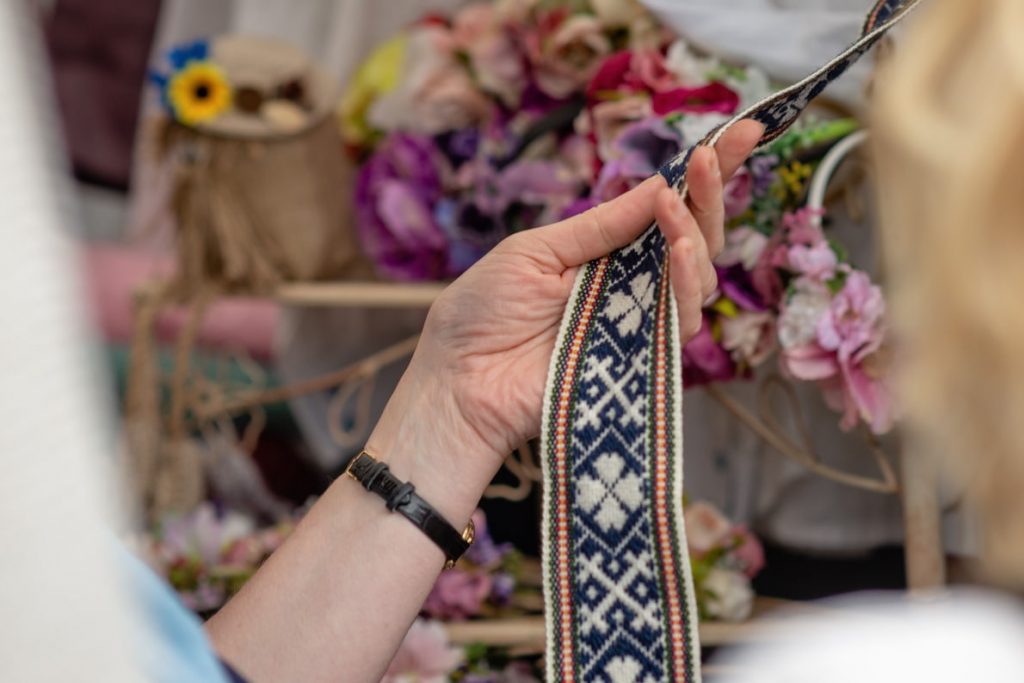Selecting the perfect fabric for your textile craft projects can be both an exciting and overwhelming experience. With so many options available—ranging from different fibers to various textures, weights, and colors—choosing the right material for your project is key to ensuring a successful and beautiful result. Whether you’re creating home decor, quilting, sewing garments, or embroidery, the fabric you choose will greatly impact both the appearance and durability of your finished piece. In this guide, we’ll walk you through the key factors to consider when choosing fabric, helping you make informed decisions for every project you take on.
1. Understand Fabric Types and Their Uses
The first step in choosing fabric is to understand the different types of materials available and what they are best used for. Each fabric has its own characteristics, which affect how it behaves when sewn, how it feels, and how it holds up over time. Here are some of the most common fabric types and their applications:
- Cotton: Cotton is one of the most versatile and popular fabrics in textile crafting. It’s breathable, soft, and relatively easy to work with, making it ideal for a wide range of projects. It’s perfect for quilting, pillow covers, aprons, tablecloths, and lightweight clothing. Cotton fabric is also available in various weights, from lightweight to medium-heavy options.
- Linen: Linen is a natural fiber that is durable and has a beautiful texture. It’s often used for home textiles such as tablecloths, napkins, cushions, and bed linens. Linen has a crisp, fresh feel, making it ideal for warm climates. However, it wrinkles easily, so consider this when choosing linen for a project.
- Velvet: Velvet is a luxurious fabric with a rich, soft texture. It’s commonly used for making cushions, upholstery, and elegant curtains. Velvet adds depth and opulence to any project but can be more challenging to work with due to its pile texture.
- Silk: Silk is one of the most luxurious fabrics and is often used for high-end clothing or delicate home decor items like pillows or throws. It has a smooth, shiny finish that drapes beautifully. However, silk is delicate, requires gentle care, and can be more difficult to sew, so it’s best for experienced crafters.
- Denim: Known for its durability, denim is often used for making jeans, jackets, and durable home textiles like throws or heavy-duty cushions. Denim comes in different weights, so you can use lighter denim for garments and heavier denim for more robust projects like upholstery.
- Wool: Wool is a fantastic fabric for cold-weather items like blankets, throws, and cozy home textiles. It’s warm, insulating, and naturally resists dirt and water. Wool can be more challenging to work with for beginners due to its thickness and tendency to fray.
2. Consider the Weight of the Fabric
Fabric weight plays a critical role in how the fabric behaves and how it looks once it’s sewn into a finished project. Fabric weight is measured in ounces per square yard (oz/yd²) or grams per square meter (gsm), and it affects how the fabric drapes, how easy it is to sew, and its overall structure.
- Lightweight fabrics (under 5 oz/yd² or 150 gsm): These fabrics are soft and flowy, making them ideal for garments like blouses, dresses, or skirts. Lightweight fabrics include cotton lawn, chiffon, and lightweight linen. However, they might not provide the structure needed for items like cushions or upholstery.
- Medium-weight fabrics (5–7 oz/yd² or 150–200 gsm): These fabrics are versatile and can be used for a wide range of projects, from skirts and dresses to pillows and bedding. Popular medium-weight fabrics include quilting cotton, cotton blends, and denim.
- Heavyweight fabrics (over 7 oz/yd² or 200 gsm): These fabrics have more structure and are perfect for items that need durability, such as upholstery, heavy curtains, or bags. Denim, canvas, corduroy, and wool fall into this category.
When choosing fabric weight, think about the purpose of your project. Do you want a soft, flowy item or something that needs more structure and durability? For example, for a cushion or throw, a medium-weight fabric like cotton or linen will work well. For a sturdy tote bag or upholstery, you may want to go with a heavier fabric like denim or canvas.
3. Know the Fabric’s Durability and Care Requirements
Durability is another essential factor when choosing fabric for your projects. Some fabrics are more durable than others and can withstand heavy use or frequent washing, while others may need extra care to keep them looking their best.
- Washability: Many fabrics, like cotton, linen, and denim, are machine washable and become softer over time. Fabrics like silk, velvet, and wool may require dry cleaning or hand washing to preserve their texture and color.
- Resistance to Fading: Some fabrics, especially those exposed to sunlight or frequent washing, are prone to fading. Fabrics like cotton and linen may lose their vibrancy over time, while synthetic fibers like polyester tend to hold color better.
- Wrinkle Resistance: Fabrics like linen and silk naturally wrinkle, which adds to their aesthetic but can require more maintenance. On the other hand, fabrics like polyester, nylon, and wool tend to resist wrinkles and hold their shape better, making them low-maintenance options.
Think about how often you’ll use and wash the fabric before selecting it for a project. For everyday items like pillow covers, cushions, or curtains, fabrics that are easy to care for and durable—like cotton or denim—are often your best bet.
4. Match the Fabric to the Style and Function of Your Project
The fabric you choose should align with the overall style and function of your project. Consider the look you want to achieve and how the fabric will behave in your design. For example, if you’re sewing a summer dress, you might want a lightweight cotton or linen fabric for breathability. For a luxurious throw or cushions, velvet or silk would add elegance and texture. When making home decor items, think about the fabric’s function as well—will it need to be durable and washable, or is it more for aesthetic appeal?
- For Home Decor: Fabrics like linen, cotton, velvet, and wool are great for making cushions, throws, tablecloths, and bed linens. If durability and ease of care are important, go for a medium-weight cotton or a washable linen.
- For Garments: The choice of fabric for clothing depends on the type of garment you want to make. For flowing dresses, lightweight cotton or silk works well, while stiffer fabrics like denim or twill are better for jackets or skirts. Think about comfort, ease of wear, and how the fabric will drape or move with your body.
- For Quilting: Cotton is the go-to fabric for quilting projects because it is easy to work with, comes in a variety of prints, and holds up well over time.
5. Test the Fabric
Once you’ve selected a fabric, it’s always a good idea to test it before starting your project. You can wash and dry a small swatch to see how it behaves. Some fabrics may shrink after washing, while others may become softer. Testing the fabric will also give you a sense of how it will feel and work with your sewing machine, as some fabrics can be slippery or difficult to handle.

